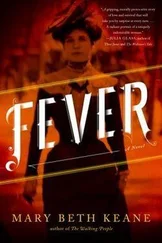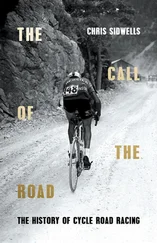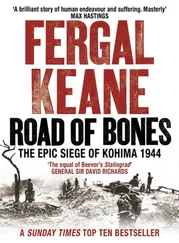At the age of twenty-four she had made her first solo journey into the jungle. ‘There was a great deal of tut-tutting and a firm belief that at the end of three days I would be borne home in a fainting fit.’ Instead, Ursula Graham Bower stayed out for several weeks and came back ‘happy as a sandboy’, clutching specimens of Naga art. Her second trip took her to the Ukhrul district, on the border with Manipur, an area where the Nagas still practised headhunting and where three unfortunate Manipuri traders had been decapitated a short time previously. Ursula Graham Bower rationalised the practice: ‘If you come home with the head then you know that the rest of the gentleman is not looking for you.’
Within three years of that first jungle excursion, Ursula Graham Bower was commanding her own unit of V Force in the Naga Hills. The story of her conversion from Roedean debutante to commander of a tribal force is one of the most extraordinary of the war. The creation of V Force had led to a demand for officers who had lived among and were trusted by the Nagas. In the febrile atmosphere of 1942 this meant sweeping away the normal conventions of recruitment and opening the way for mavericks like Graham Bower.
She first visited the Naga Hills in 1937 when her ambition to study archaeology at Oxford was thwarted by a slump in the family fortunes. That summer a schoolfriend, Alexa McDonald, invited Ursula to accompany her to India, to visit her brother who was a civil servant in Manipur. The two women went by ship, train, river steamer, train again, car, foot and bamboo river raft. Travelling by raft, they knitted to while away the hours drifting down long rivers. Stopping to explore a small island, they had to run for their lives after a guide spotted tiger prints in the mud. After her adventure Ursula would never feel at ease in London again. Back home she began to cultivate senior fellows of the Royal Geographical Society, impressing them with her knowledge of Naga life and her enthusiasm for research. She made a second visit to Naga country before returning home in April 1939 to join the London Ambulance Service as war approached. The boredom of the phoney war, ‘knitting interminable jumpers and waiting for a siren that never came’, and her longing for the Naga Hills got the better of her and she announced to her family that she was going back to India. They responded with shock, suspecting that she had ‘gone completely off her rocker’, but hoping that she might meet a nice young officer in India – somebody who might prove more capable than they had been of taming her adventurous spirit.
She reached Kohima in November 1939, only to be told that a permit to travel out into the hills could not be granted yet. For reasons that were probably to do with the outbreak of war, the Naga Hills were strictly off-limits on the orders of the political agent. Frustrated in her ambition, Ursula Graham Bower suffered a nervous breakdown. ‘I hadn’t realised that a shock of this sort could stun one physically,’ she wrote. ‘I remember almost nothing of the next twenty-four hours.’ She went to see the political agent in person at Manipur, but he would not change his decision. Afterwards Ursula wandered alone in the dusk for hours. Her nervous collapse lasted a fortnight, during which time she put away or locked up anything that might be used as a suicide weapon. ‘It was a giddy path. The holds were so small; one clung hand by hand, a finger.’
Eventually permission was granted and she set off for the Cachar Hills, some eighty miles, as the crow flies, from Kohima. This was a district adjoining the Naga Hills, where the sixteen-year-old priestess-cum-rebel Gaidiliu had been active against the British. Gaidiliu had told her followers that even in prison the British could not kill her spirit, and that she would return in a form that her enemies would be unable to recognise.
When Ursula Graham Bower arrived she was surrounded by adoring locals who clearly believed she was the vanished priestess. The impression was reinforced by her physical appearance: the Englishwoman was tall and statuesque. ‘She [Gaidiliu] was tall and rather strongly built and one of her more lunatic followers decided I was the reincarnation … half the population appeared to go stark staring mad … they were rushing at me clawing at me and calling me Goddess.’ Warriors who had fought under Gaidiliu came in from their villages to see the reincarnation. Privacy became impossible. At one point she was having a bath when an elderly man carrying a gift of a chicken walked into her hut. She had no towel and only a bar of soap with which to cover herself. She screamed and a bodyguard rushed in to hustle the old man out. When she reported back to the government an official told her, with the ingrained cynicism of his species, that ‘if they must have a goddess they might as well have a government one’.
Ursula’s parents had nurtured visions of her attending glittering balls in Delhi or taking afternoon tea in Simla, but by the middle of 1942 their debutante daughter was about to become the first female guerrilla commander in the history of British arms. Although her only experience of war thus far had been taking care of refugees and wounded soldiers coming out of Burma, the fact that she lived in the hills and was respected by the local Nagas made Ursula Graham Bower a logical choice for command.
After consulting with Charles Pawsey and other officials, the head of V Force dispatched an elderly officer to bring her the news of her appointment. The man he sent, Colonel Douglas Rawdon Wright, was an old India hand who had ridden with the Deccan Horse on the Somme in one of the last great cavalry charges of British arms. He had also spent several years as an officer with the Assam Rifles. Although badly wounded in the leg on the Western Front and forced to retire to England, he yearned to return to the India where he had soldiered as a young man. Colonel Rawdon Wright badgered the military authorities for a job. Eventually they sent him out to Assam to a desk job with V Force. Rawdon Wright soon tired of the inertia of headquarters and the nagging sense that younger men were laughing at the desk-bound old warrior with the pronounced limp. When asked to go into the Cachar Hills and give Ursula Graham Bower news of her command he seized the opportunity with enthusiasm.
Looking out of her bungalow one August lunchtime, Graham Bower saw an elderly white man limping down the narrow path to the village. She immediately sent a man with a note to invite the visitor to lunch. A reply came a few minutes later: ‘So sorry but I’ve got a gammy leg. I’d better go straight on down to the rest-house.’ Later in the afternoon she made her way down to meet the colonel and saw that he was unable to bend his leg. But when they set out to explore the district he refused all offers of help from the Nagas: he would not be carried about ‘like a woman’ or some effete civil servant from Delhi. And so the group traversed steep inclines over several miles while Rawdon Wright struggled along, sometimes going down on all fours to force his way upwards, and all the time chatting with Graham Bower about the quality of the fishing in the hills or about people they knew in common in Kohima and Imphal. ‘He was superb,’ she wrote later. ‘We might have been sitting in a club veranda.’ On his way back down from the hills the Naga offered to provide a litter on which he could be comfortably carried. Again he refused. Graham Bower’s account of his departure can be read as an elegy not only for an old soldier, but for an ideal of imperial duty that was entering its twilight. She stood with the village headman and watched the colonel climb over the rocks and over the slippery ground, leaning on the shoulder of his guide until he reached the turn of the road that would take him out of view. He stopped and turned back to wave. ‘We waved back. Then the white shirt was gone. Nobody said anything, because there was too much to say.’ On his way down to the plains he fell over three times. The journey ruined his health and he was dead before the end of the year.
Читать дальше












